Gen. Joe
The Joint Force — Maintaining a Competitive Advantage
Without understating the challenges of readiness and the erosion of our competitive advantage — which is very real, and has occurred over the last few years — I want you to know that I have absolute confidence that the joint force today can defend the homeland and our way of life, meet our alliance commitments, and possesses a competitive advantage over any potential adversary.
It’s important that our Allies, potential adversaries, and the American and international public understands they we have the most competent, professional and capable military force in the world.
My confidence in the Joint Force comes from three fundamental sources. First, the United States Congress continues to ensure that our service men and women are properly resourced. Second, our partners in industry continue to deliver world-class warfighting solutions to the Joint Force. Third, and most importantly, the extraordinary quality of the young men and women that we are fortunate enough to recruit and retain.
Over the past 15 months, I’ve had the privilege of visiting many of them and it’s been the best part of my job. I’ve met Soldiers, Sailors, Airmen and Marines conducting a vast range of missions in a multitude of countries. Today, our Joint Force has over 275,000 members serving in 177 countries. The range of missions conducted by these Soldiers, Sailors, Airmen, and Marines reflect not only the quality of the force, but also highlights the complexity of today’s security challenges and the essential role the United States has in meeting those challenges.
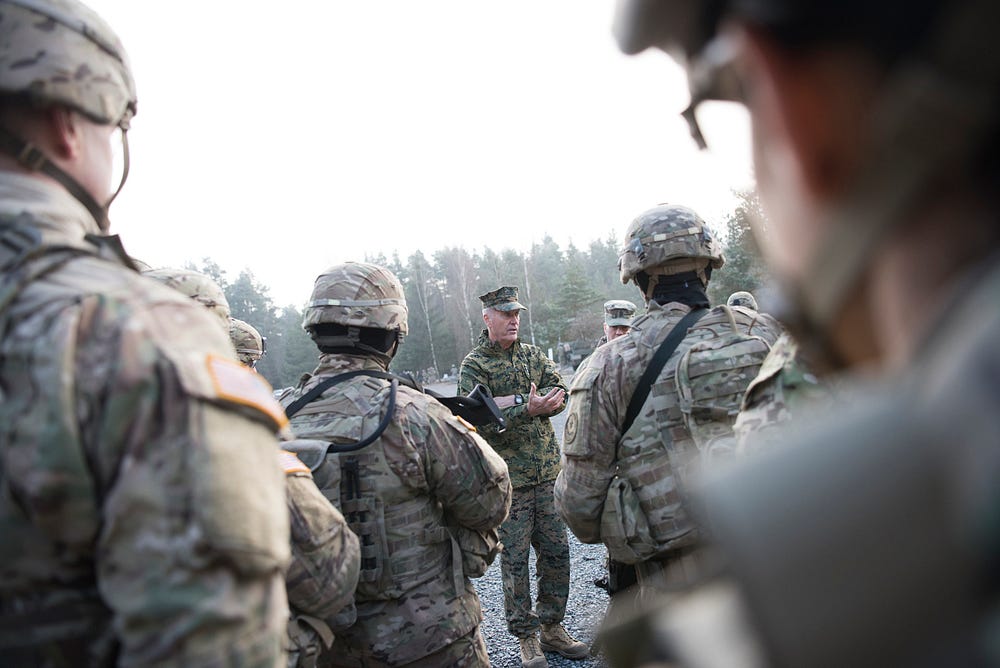 Marine Gen. Joseph F. Dunford, Jr., chairman of the Joint Chiefs of Staff, and Command Sgt. Maj. John W. Troxell, Senior Enlisted Advisor to the Chairman of the Joint Chiefs of Staff, speak to troops assigned to the 2d Cavalry Regiment, at the 7th Army Training Command’s Grafenwoehr Training Area, Germany, Dec. 8, 2016. (DoD photo by Navy Petty Officer 2nd Class Dominique A. Pineiro)
Marine Gen. Joseph F. Dunford, Jr., chairman of the Joint Chiefs of Staff, and Command Sgt. Maj. John W. Troxell, Senior Enlisted Advisor to the Chairman of the Joint Chiefs of Staff, speak to troops assigned to the 2d Cavalry Regiment, at the 7th Army Training Command’s Grafenwoehr Training Area, Germany, Dec. 8, 2016. (DoD photo by Navy Petty Officer 2nd Class Dominique A. Pineiro)
And, it is not just my visit with those extraordinary men and women that has convinced me of that. As I’ve traveled around the world and have met with senior political and military leaders, one this is abundantly clear to me: the United States is widely considered to be an indispensable nation, and the guarantor of the international order that’s brought relative peace to our nation, to our allies and extraordinary economic prosperity since World War II. Even nations who publicly criticize us in private talk about the importance of our leadership and the role we play.
And while our global leadership and influence is the product of much more than our military capabilities, the competitive advantage that we have enjoyed over potential adversaries has been a critical component of our national power and the role that we play on the world stage. The primary enablers of our competitive advantage, in my judgement, are the network of alliances and partnerships that we have developed over the past 70 years, and our ability to project power when and where needed to advance our national interests.
But we’re not going to get any credit tomorrow for what we did yesterday. While I believe we can meet today’s challenges, we can’t take our competitive advantage for granted in a dynamic and complex security environment.
F-35B Lightning II aircraft perform a flyover above the amphibious assault ship USS America (LHA 6) during the Lightning Carrier Proof of Concept Demonstration Nov. 20, 2016. (U.S. Navy photo by Andy Wolfe)
In looking to the future, we needed to ask some fundamental questions: What kind of military forces will the United States need to meet its global responsibilities in the near- and long-term future? What is the nature of the threats we will face? What capabilities will be the most relevant in dealing with those threats? And what do we need to maintain a competitive advantage in our ability to project power and sustain the force in the future?
To help answer these questions, we look at our future and our current capabilities against four state actors — China, Russia, North Korea and Iran — and one non-state challenge, violent extremism. This framework informs our planning, our capability development, and our assessment of operational and strategic risk.
As military planners, we focus on the military capabilities of potential adversaries, as opposed to their intent or their political objectives. We also made the important assumption that if we build a force that can deal with the challenges associated with those state actors, or some combination of those state actors and violent extremism, we will build a force with the inherent flexibility and responsiveness to deal with what most assuredly will be something we don’t expect in the future.
From a purely military perspective, let’s look at those challenges.
Russia presents the greatest array of military challenges. Despite very negative demographic and economic trends, Russia has made significant investments in its military capabilities. They’re also operating with a frequency and in places that we haven’t seen for decades, and we’ve seen them modernize a number of systems that pose a threat to the United States and its allies. This includes long-range conventional strike and nuclear capabilities, as well as a full array of cyber, space, ground, electronic warfare, and maritime capabilities. Their modernization efforts have to be viewed though in the context of their activities in Ukraine and Crimea,and Syria. In my judgment, their operations and their capability development, coupled with asymmetric doctrinal and strategic approaches, are designed to counter NATO and U.S. power projection capability, and undermine the credibility of the NATO alliance and the United States’ ability to meet its commitments to NATO.
Moving to the Asia-Pacific region. While our nation, as a matter of policy, seeks opportunities to cooperate with a rising China, from a military perspective we’re closely watching their capability development and operational activities. China’s budget expenditures are fairly opaque, but by some accounts they’re spending as much as 7 percent of their gross domestic product on defense. And that trend has been going on for over a decade. It is clear China has embarked on a significant program to modernize and expand its nuclear enterprise, along with its power projection, space, cyber, ballistic missile, cruise missile, and air defense capabilities. And, similarly to Russia, when we look at China’s capability development and their actions, we assess they’re focused on limiting our ability to project power into the Pacific and in undermining the credibility of the United States to meet its alliance commitments in the Pacific.
North Korea’s behavior and capability development continues to pose a threat to our allies, and potentially now the homeland. We have seen over the last several years their pursuit of nuclear weapons, along with a concerted effort to build intercontinental ballistic missile, cyber, and space capabilities.
In the case of the Iranian regime, it aims to establish itself as the dominant power in the Middle East. I often say their major export is malign influence. Iran supports terrorist organizations while modernizing an array of maritime, ballistic missile, space, cyber, and cruise missile capabilities. In addition to destabilizing the Middle East, they threaten freedom of navigation along critical commercial routes.
Meanwhile, non-state actors such as ISIL and al-Qaida remain a threat to the homeland and the American people, our allies and our partners. Some have called violent extremism a generational struggle, and I wouldn’t argue with that.
There’s a military dimension to our response. We can disrupt attacks against the homeland, we can dismantle their capability and we can built the capacity of indigenous forces. We cannot address the conditions that underlie violent extremism. That’s why we continue to support a long-term intergovernmental and coalition approach to the challenge, while prioritizing our military efforts against the external threat in ensuring that wherever the enemy is, we dismantle their capabilities.
The challenge of violent extremism and the four state challenges have a number of implications for the joint force. Let’s look at two.
The first implication is foundational. We require a balanced inventory of military capabilities with sufficient capacity to give us a competitive advantage across the full range of military operations in the context of the challenges mentioned earlier.
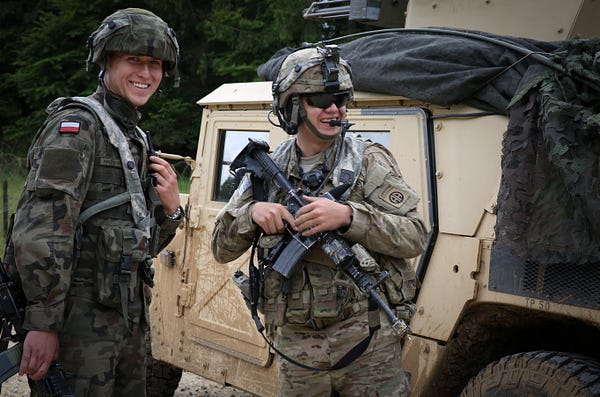 A U.S. Soldier of 1st Brigade Combat Team, 82nd Airborne Division and a Polish soldier of 6th Airborne Brigade conduct a defensive operation during the Swift Response 16 training exercise at the Hohenfels Training Area, Hohenfels, Germany, Jun. 19, 2016. (U.S. Army photo by Spc. Lloyd Villanueva)
A U.S. Soldier of 1st Brigade Combat Team, 82nd Airborne Division and a Polish soldier of 6th Airborne Brigade conduct a defensive operation during the Swift Response 16 training exercise at the Hohenfels Training Area, Hohenfels, Germany, Jun. 19, 2016. (U.S. Army photo by Spc. Lloyd Villanueva)
As a nation that thinks and acts globally, I don’t think we have a choice between a force that can fight the Islamic State and one that can deter and defeat a state actor with a full range of nuclear and conventional capabilities. Nor do we have the luxury of choosing between meeting our current operational requirements and developing the capabilities we need to meet tomorrow’s challenges. We also have a pressing need to modernize the force, to ensure we maintain a safe and credible nuclear deterrent and a competitive edge in conventional ground, maritime, air, space, and cyberspace capabilities.
I acknowledge maintaining a competitive advantage to meet our requirements can’t be solved exclusively by increasing the size of the force or by more platforms. We also have to prioritize development of disruptive, innovative ways to meet our requirements. To that end, we’re investing intellectual capital and time as well.
The second implication is the one that indicates we have to better integrate all elements of national power to advance our interests on a day-to-day basis. Due to our competitive advantage, I believe a conventional conflict with a state actor is less likely in the near term. But the absence of conventional conflict should not be confused with peace.
We tend to have a binary perspective of the security environment: we’re either at peace or at war. And that perspective informs the activities and the authorities that we give to the combatant commanders and our agencies and departments in the field. But state actors like Russia, China, North Korea and Iran, are not restricted by that model. They effectively leverage traditional military activity and force posture with economic coercion, political influence, information operations, unconventional operations, cyber capabilities, all to advance their national interests on a day-to-day basis and they do it in a way that avoids the penalty of escalation.
I think we all know Russia is particularly adept in waging what I would describe as adversarial competition that has a military dimension, but it’s short of traditional armed conflict. And they do that in a way that affects the credibility of our alliances and our ability to project power. Advancing our interests in the 21st century is going to require that we fully understand that dynamic and we develop effective responses.
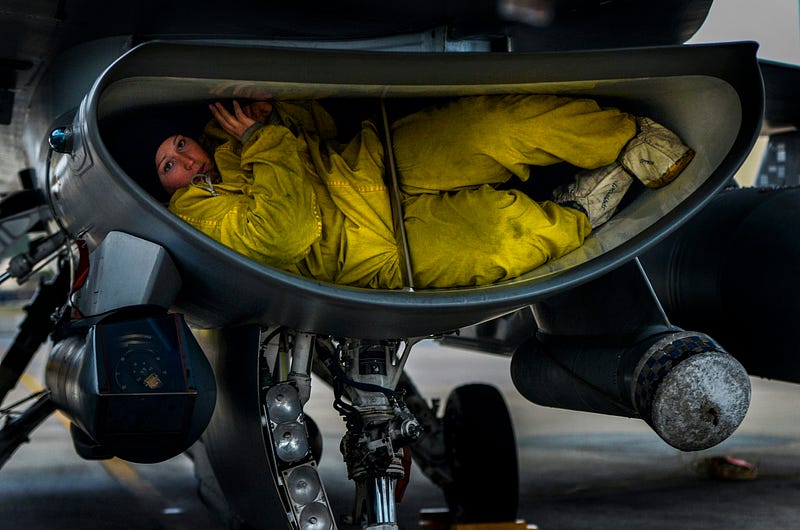 A U.S. Air Force crew chief assigned to the 77th Fighter Squadron, crawls out of the intake of an F-16 Fighting Falcon as she completes her post flight inspection on the aircraft, Jan. 15, 2015, Shaw Air Force Base, S.C. (U.S. Air Force photo by Kenny Holston)
A U.S. Air Force crew chief assigned to the 77th Fighter Squadron, crawls out of the intake of an F-16 Fighting Falcon as she completes her post flight inspection on the aircraft, Jan. 15, 2015, Shaw Air Force Base, S.C. (U.S. Air Force photo by Kenny Holston)
These implications — the need for a balanced inventory of capabilities and the need to reconsider how we compete with other state actors on have to be addressed if we’re going to continue our traditional role as a global leader. To do that, we need clearly established priorities for capability development, and a stable and predictable budget that enables wise fiscal decisions to be made with a long-term view.
In the end, if we fail to make the right investments right now and we fail to make the adaptations necessary to competitive, our competitive advantage is going to continue to erode, as will our ability to lead.
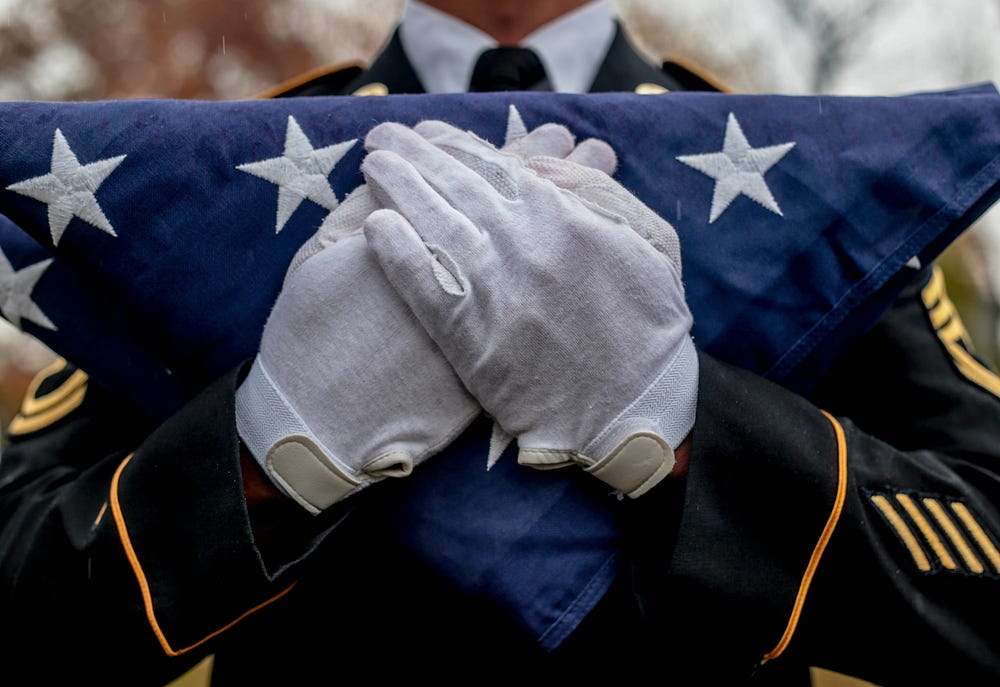 Yet, because of the talented men and women in our military today, and because of the support of Congress and our industry partners, I remain confident that the joint force will continue to adapt to meet today’s challenges, and that we will maintain a competitive advantage that allows the United States to meet its obligations around the globe.
Yet, because of the talented men and women in our military today, and because of the support of Congress and our industry partners, I remain confident that the joint force will continue to adapt to meet today’s challenges, and that we will maintain a competitive advantage that allows the United States to meet its obligations around the globe.
To sustain confidence in our competitive advantage we will need to invest and adapt wisely, prioritize correctly, and continue to work with Congress and industry to equip and field the best Joint Force the world has ever seen.
A U.S. Army Soldier holds an American flag during a memorial ceremony and monument dedication in Passaic, N.J., Nov. 9, 2016. (U.S. Air Force photo by Tech. Sgt. Matt Hecht)
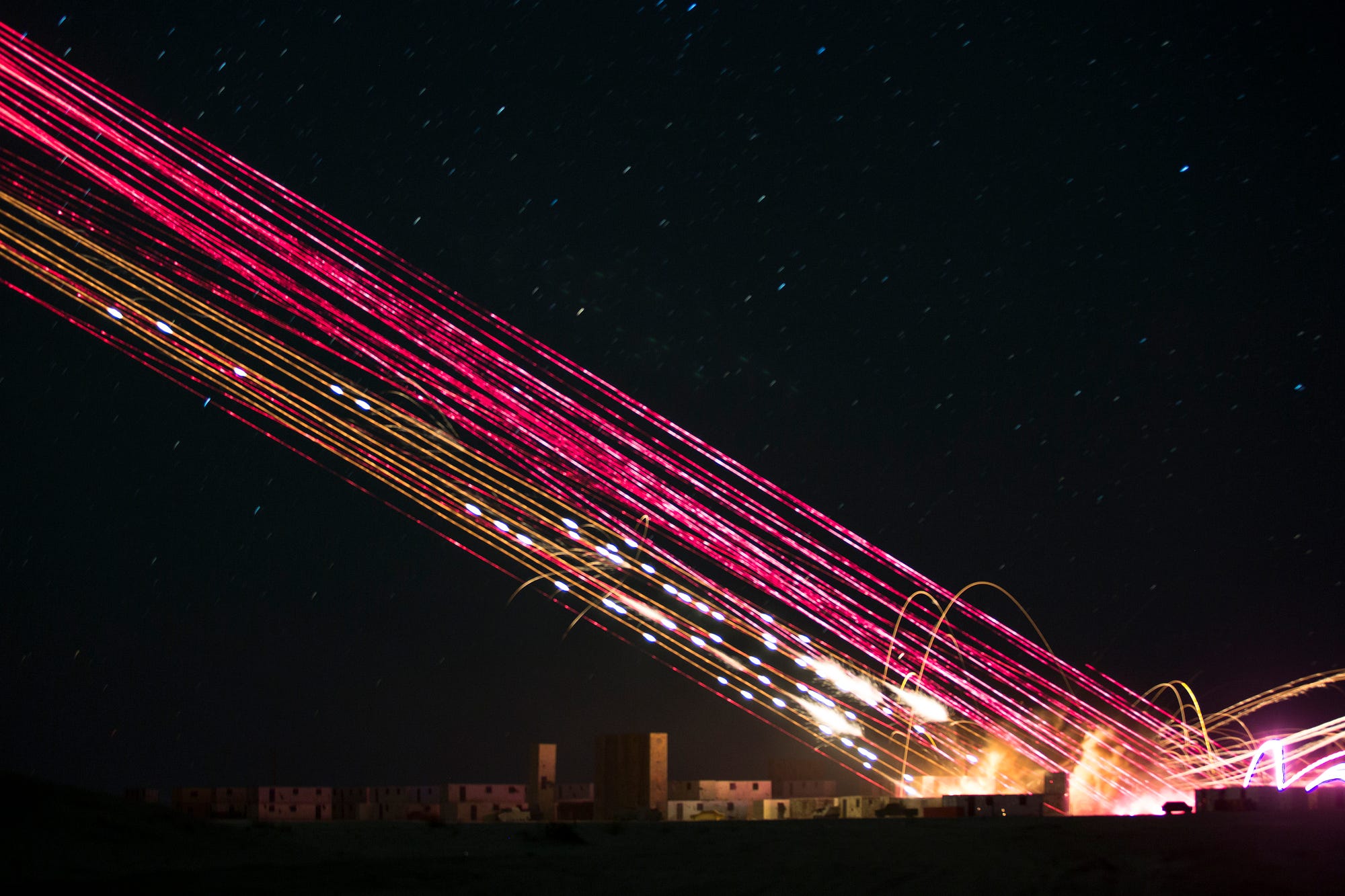
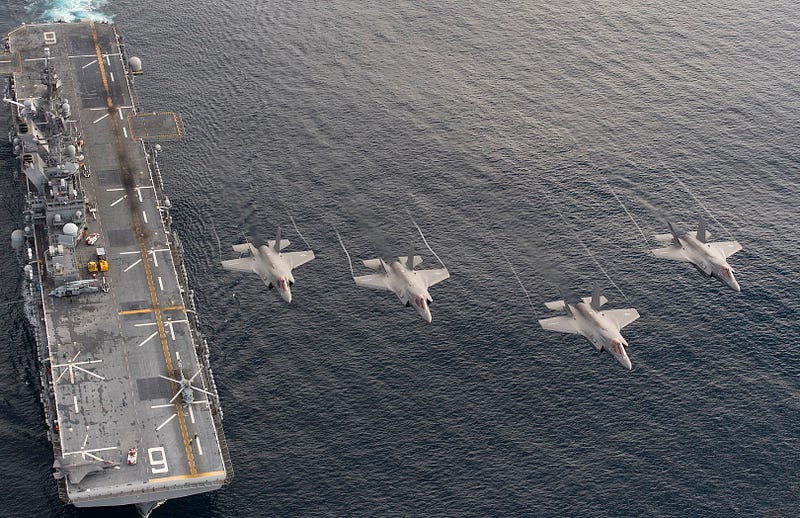
No comments:
Post a Comment